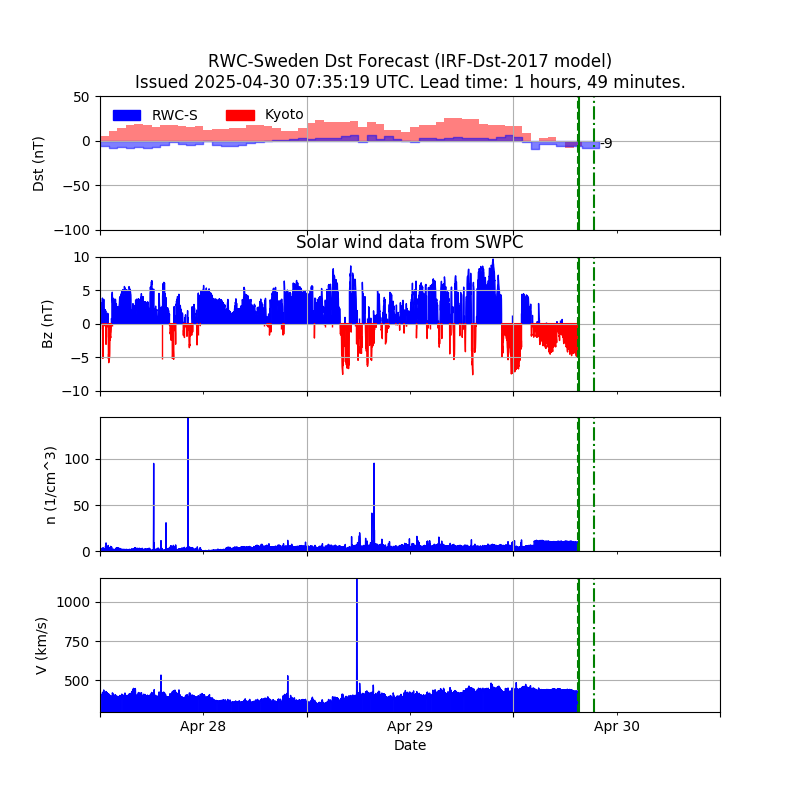DST forecast

The top panel shows predicted Dst in blue (RWC-S) and observed Dst in red (WDC-Kyoto) over the last three days. Each bar represents the 1-hour width of the Dst index. Attached to the last Dst bar is the latest predicted value. The green solid vertical line marks the time when the prediction was issued, with the timestamp shown in the header. The dashed vertical line marks the timestamp of the latest available input data. The dash-dotted line marks the timestamp of the latest prediction.
The three following panels show the solar wind magnetic field Bz, particle density n, and speed V measured at L1 with 1-minute resolution.
The models
The Dst prediction model consists of an ensemble of time-delay neural networks driven by measured solar wind at L1. The prediction lead time has two components: a variable propagation time from L1 to Earths bow shock, and the model lead time which is 1 hour. Thus, the maximum prediction lead time is 1 hour plus the propagation time.
The inputs to the model are solar wind magnetic field B and Bz (only Bz shown in plot), density n, speed V, and time of day and time of year. The 1-minute solar wind data are transformed into 1-hour value to match the 1-hour Dst interval. The models are run once per minute thus providing 60 predictions for every 1-hour interval. In the comparison with the observed Dst, only the predicted Dst with timestamp closest to the standard 1-hour Dst interval is used. In the plot, all bars showing predicted Dst, except the last bar, therefore comes from one prediction for each 1-hour interval. As the prediction lead time is variable and does not match the standard 1-hour Dst interval, the last bar corresponds to the 1-hour interval containing the last predicted timestamp. The last bar will therefore change in height during the passage of time.
References
- The Dst-prediction models have been described in Wintoft et al.[2018].
- The real-time solar wind data are obtained from SWPC.
- The real-time Dst index is obtained from World Data Center for Geomagnetism, Kyoto.
- The main development of the current Dst forecast model was carried out within the EU project PROGRESS, No. 637302.
- The models have been implemented at theESA SSA portal under the G-ESC, where additional verification is carried out in real-time.
- We are responsible for Regional Warning Center - Sweden, part of International Space Environment Service ISES.